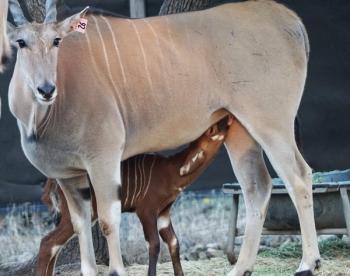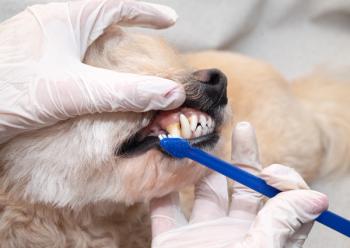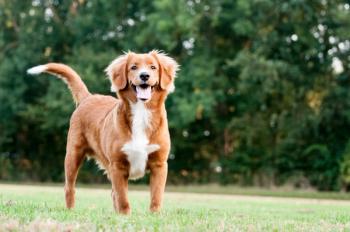
BVD testing: What's happening in the herd-acute, chronic, transient or PI? (Proceedings)
When I report back to a cattle owner that his animal is "BVD positive," before I can even begin to explain what that means, I am all to often asked "what is BDD, BV . . . what?" since I am usually talking to the rancher about a normal calf , not an obviously sick animal.
When I report back to a cattle owner that his animal is "BVD positive," before I can even begin to explain what that means, I am all to often asked "what is BDD, BV . . . what?" since I am usually talking to the rancher about a normal calf , not an obviously sick animal. So, here is a little client educational aid to help in addressing, and potentially mitigating, the various production problems that can occur in cattle operations exposed/infected with BVDV.
It is BVD, just like the underwear, and the animal is infected with a virus named Bovine Virus Diarrhea Virus. It is rarely associated with any type of diarrhea although it was originally identified in diarrhea of weanling calves. What this BVD means is that this animal is a source of infection and problems for other animals in the herd.
BVDV is a common and widespread virus that infects cattle and wild ruminants and this virus is a member of a group of viruses called Pestiviruses—very appropriate. BVD is not one virus, but 200 or more closely related strains divided between two BVD serotypes. Even the two serotypes are quite closely related.
BVD virus is spread by respiratory secretions and has an incubation of about 10 days. After the virus infects the cells of the respiratory system, it invades the bloodstream and spreads to all tissues. Its favorite blood cell is the lymphocyte which transports the virus to all other organs and tissues. Unfortunately, the lymphocyte is the basis of the immune system and immune response of mammals. The immune system of the infected animal also may be compromised by BVD infection.
BVD virus has the ability to permanently infect some cattle; we call these cattle persistently infected—PI animals or BVD PI! PI calves occur when a non-immune, pregnant cow is exposed to the virus between 40 - 120 days of gestation. This may not happen with all exposed fetuses. However, during this time in the uterus, the fetal immune system may not recognize BVDV as foreign so the fetus accepts the BVD virus as part of it's normal makeup. These calves are usually normal at birth, but they are able to spread the virus to contacts through respiratory fluids. Very few PI calves reach 2 years of age! This should not be reassuring because PI animals can shed the virus until death or removal.
If the BVD invades a susceptible or non-vaccinated (not immune) cow or calf, one of several different situations may occur. 1) An exposed cow/calf can become transiently infected and shed the virus for days or weeks. This occurs more often than not without clinical signs but she still is a source of infection for herd mates during the infection. These individuals routinely develop immunity and clear the infection and are then safe to keep in the herd. 2) A susceptible (non-immune) animal, especially a calf, may develop acute signs of a respiratory infection or may just be a chronic poor doer because the virus can affect the immune system making the calf susceptible to other infections while shedding virus from 10-30+days. These animals may clear the infection and return to normal. 3) If a pregnant, non-immune cow is exposed to BVDV any of the following can occur: a) fetal resorbtion (0- 90 days gestation), b) abortion (60-200days gestation), c) a PI calf (90-150 days gestation) or d) elimination of the virus and birth of a normal calf (> 150 days of gestation).
If an immune cow is exposed to BVDV, none of the above disease situations will occur. A transient, acute, chronic or persistent infected animal coming into the lot/herd presents a danger to all herd mates. PI animals excrete more virus than the acute, transient or chronic infected animal and occasionally excrete sufficiently high quantities of virus and overcome immunity.
The most worrisome situation associated with BVD in cattle is abortion. Other presentations are chronic poor doers, weak calves and calves with signs of brain involvement. In the feedlot, poor performance and increased respiratory disease and an occasional diarrhea are associated with BVD infection.
While a PI animal is often a signal that others are present in the cow-calf herd, the prevalence of PI animals within a herd is variable but generally quite low ranging from 0.1 - 6% with the average less than 2%. Surveys have shown that upwards of one quarter of beef herds have PI animals present.
BVD can have a marked impact on the production of a herd or feedlot. The major impact is on loss of calves both via abortion and death due to susceptibility of other infections. The presence of PI animals reduces growth and weight gain in the feedlot. The medical cost of BVD infected animals is estimated to be $20- $40 per animal. The loss of production due to the presence of BVD in a herd has been estimated to be $20 – $50/head!
The presence/prevalence of BVD PIs within a herd can be determined by laboratory testing. However, there are several different laboratory assays that are utilized and an understanding what the results of the various laboratory tests mean relative to the situation in the infected animal and the potential impact on the herd is important and necessary to affect a control program.
The standard laboratory assays are PCR, ELISA, serum neutralization and virus isolation. The PCR assay demonstrates the presence of genetic material from the agent in question. The ELISA assay can be designed to identify antibodies or antigen, the serum neutralization assay is for antibodies and virus isolation is for demonstration of viable, infectious virus. Virus isolation is the "gold Standard" against which all other assays are compared. A positive virus isolation is definitive for an ongoing infection—not necessarily disease! BVD virus can be isolated from all of the afore mentioned infectious situations but its association with disease needs to be evaluated carefully in light of the clinical history/presentation; never-the-less, a virus isolation positive animal should always be considered a risk to herd mates.
Serum neutralization is less used than is the past because demonstration of antibodies is a retrospective data—the animal has been exposed of vaccinated! Some laboratories have used the SN test for identification of PI animals based on the demonstration of a high, persistent antibody titer, generally >1:400. It is always risky to attempt to determine the infectious status, whether the animal is now infected or how long ago the animal was infected, based on antibody level since the response is so individually variable.
ELISA assays are more commonly used to identify antigens as a correlative of ongoing infection. However, the antigen can be derived from inactive sources and not from an living active infectious agent. BVD PI animals and acute, transient, etc., can all be identified via ELISA assays. The ear notch specimen is the sample of choice for identifying PI animals since the virus in PI calves, for undefined reasons, accumulates in skin epithelial cells which is not the case in the other forms of BVD. ELISA assays can also be utilized for identification of the other forms of BVD V infections utilizing blood or internal tissue extracts. The acute, etc., infections do not result in virus presence in skin!
The polymerase chain reaction (PCR) assay demonstrates BVDV nucleic acid in clinical specimens. PCR sensitivity permits this assay to be utilized to identify all types of BVDV infections utilizing skin, blood, serum or organ specimens. This assay requires a high level of technical expertise and strict quality control measures to assure accurate results. I evaluate the results very closely in light of clinical signs since recent vaccination may give a positive result. The presence of nucleic doesn't necessarily mean disease.
Herds that have an established vaccination program may elect to test only the newborn calves. The dam of a PI calf is then tested since she was the source of infection for the calf. She may not be PI but was exposed during pregnancy and was not immune. The fetus was infected at that time.
BVD control requires a program of biosecurity, vaccination, testing and removal. The addition of animals to your herd with known vaccination and negative PI status is the key to herd biosecurity. As you know, vaccination is not absolute (100%) protection, but a regular annual vaccination program will (and does) reduce the number of susceptible animals within the herd and protect the fetus from infection. Vaccination coupled with test and removal of infected animals will further reduce the potential problem.
Since BVD PI animals serve as a source for further infections, it is advisable to remove the animal(s). They are safe to eat! Sale should not be an option because it just sends the PI situation to another unsuspecting producer. The movement of PI, chronically or acutely BVD infected animals into susceptible herds (and even within the resident herd) accounts for the maintenance of this virus in the cattle population.
Newsletter
From exam room tips to practice management insights, get trusted veterinary news delivered straight to your inbox—subscribe to dvm360.






